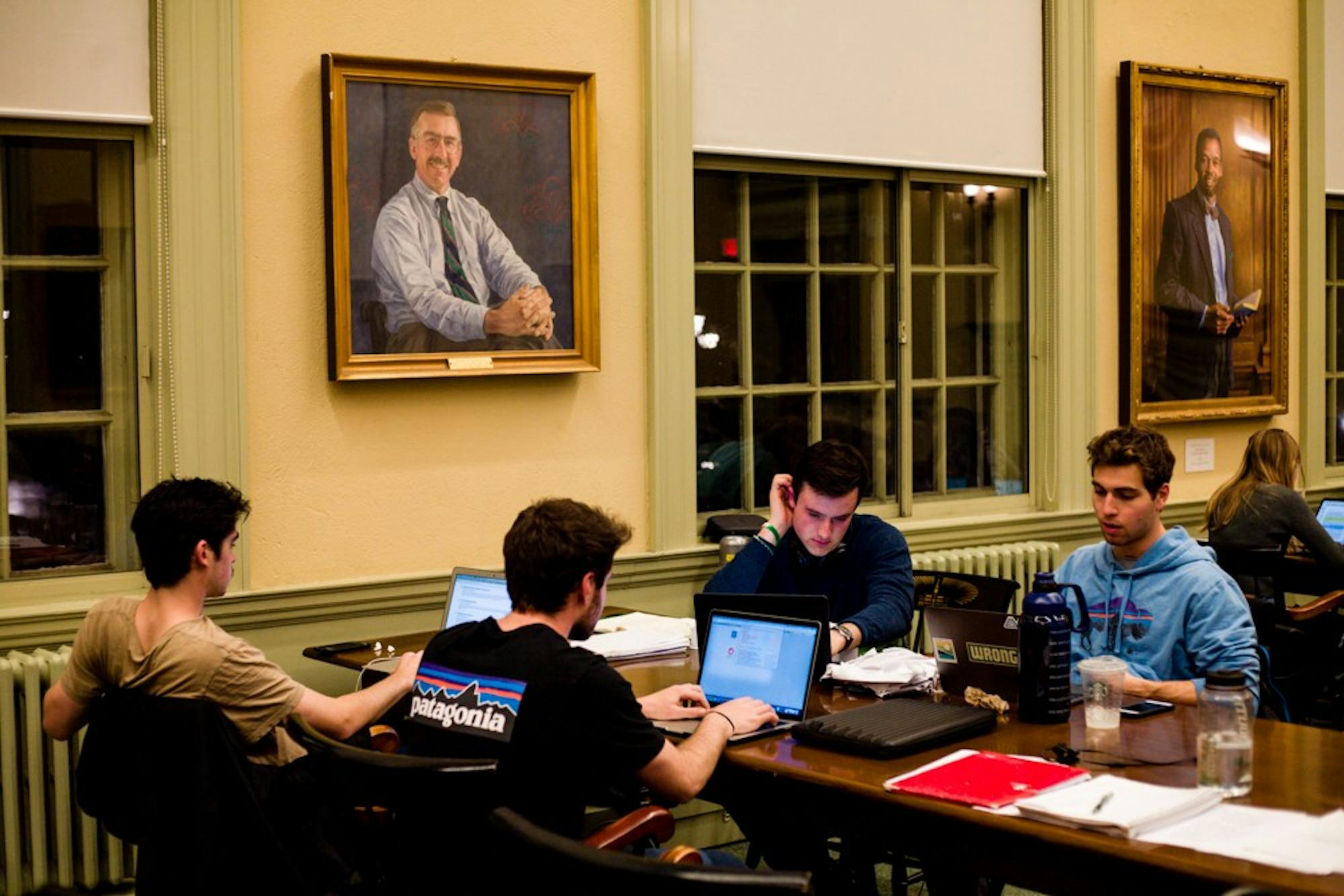Loading screens and buffering videos have become a familiar sight for those connected to Dartmouth’s wireless networks. While a new network is currently being installed throughout campus, students have noticed slower WiFi connectivity this term, which has hindered their ability to complete assignments and communicate with others.
“I was here over the summer and [the WiFi] definitely seems different from then,” said Abby Cooper ’21. “It wasn’t this bad. Now it takes extra time to actually complete things, and considering everything we do is on Canvas, it’s kind of annoying to have to wait every time you need to know something.”
The information, technology and consulting department recognizes the problem and attributes this slowdown to the outdated capabilities of the current network, which was installed in 2011, according to assistant director of network services Felix Windt. At that time, there were approximately 4,000 concurrent devices on the network, Windt said. Now, the number has gone up to more than 25,000. Since the summer, ITC has begun the process of updating WiFi across campus, a process expected to take two years.
“More and more people associate with an access point and there’s only a certain amount of bandwidth it can share,” said chief information officer Mitchel Davis. “It becomes more distributed and slower until it won’t let anybody else on the network because it can’t give you any signal.”
Since 2015, ITC has pushed for the wireless networks to be upgraded, according to Windt. Davis said that when he joined the College in 2017, he noticed an accumulation of 30 years’ worth of technical debt and prioritized the overhaul of the campus’ WiFi.
“Technical debt refers to when you manage technical systems and make decisions that put off necessary investments, putting together workarounds or Band-Aids [instead],” Windt said. “You’re solving the problem in the short-term, but it makes it much harder to solve the problem in the long term.”
This year, Windt said, the College allocated approximately $11 million to aid ITC’s installation of the new wireless system and recover from the accumulated technical debt.
“We’re not trying to get the old system up to snuff,” Windt said. “We’re literally going through a process of going to every building, ripping out the existing wireless and installing something completely new that is current technology.”
Upgrading the wireless infrastructure in each building on campus will require several steps.
First, contractors will determine the optimal placement of wireless hardware by moving access points on tripods throughout every room and measuring signal strength. These measurements produce a design that ensures consistent connection at 5GHz throughout the building. After the radio frequency survey, other contractors will begin installing Ethernet cabling to connect to the wireless access points. More than 90 percent of the wiring will be new, and two wires will be pulled to each access point location in anticipation of future growth or backup connections. New hardware is installed as the last step; access points are connected to the new wires and attached to the ceilings or walls to begin providing services.
The process is ongoing, with ITC and hired contractors taking two months to work through each building, Windt said. Almost all of the buildings in the Tuck School of Business and Thayer School of Engineering have been completely upgraded, and the central libraries — which include Baker-Berry Library and Sanborn Library — and the Class of ’53 Commons are in the middle of the procedure. Kara Shurmantine Tu’20 said that she has noticed a difference in WiFi speeds.
“Most of the classes are lecture-based and low-tech, so it’s not something that would come up during class, but in terms of day-to-day usage, connectivity has improved from last year,” Shurmantine said.
The upgrade also includes almost doubling the number of access points to about 6,000, according to Windt. He added that AX WiFi, which is particularly adept at serving areas of high density, will be installed in classrooms.
“What we’re really expecting to build is pervasive good wireless coverage,” Windt said. “Ideally, we should no longer have anyone complain about WiFi not being good, anywhere — that’s the goal.”
While this upgrade continues throughout campus, Davis and Windt acknowledged that students are currently facing connectivity issues and that the ITC is willing to use short-term solutions in the meantime. This includes adding access points in places where several students have reported problems with WiFi while they wait for the upgraded system. However, Windt added that ITC must balance their limited resources devoted to these provisional fixes with the resources dedicated to the campus upgrade project.
“When they originally put the access point in, there were maybe 10 people on it,” Davis said. “Now there’s 60 with four devices they’re walking around with. We can go add more old [access points] into the space and try to beef up those spaces.”
Windt also warned about the danger of switching networks from eduroam to Dartmouth Public as a temporary solution. He said that the networks are run by the exact same access points and radios; the only difference is the additional authentication eduroam has to allow students to use campus resources. Transitioning often between the networks can present as an attack to an access point, enabling protective measures that drop the connection.
“Three-quarters of user-specific problems we solve involves forgetting Dartmouth Public,” Windt said. “The logs on the wireless system show us that a user actually gets kicked off wireless because their device flipped flopped between eduroam and [Dartmouth] Public so much. The AP [sees] an unstable client, and tells [them] to hold out for a little bit.”
In addition to the $11 million allocation, the College is building a sustainability fund for network services that can be used for upgrades. Instead of having to submit proposals for capital received at a later time, the department will have funds for whenever new technology is released to maintain adequate connection.
“That reserve is sized so that we’ll be able to replace the entire WiFi on campus every four to five years,” Windt said. “Technology has moved in faster cycles than our funding has traditionally, and that’s what we’re trying to address looking forward.”




